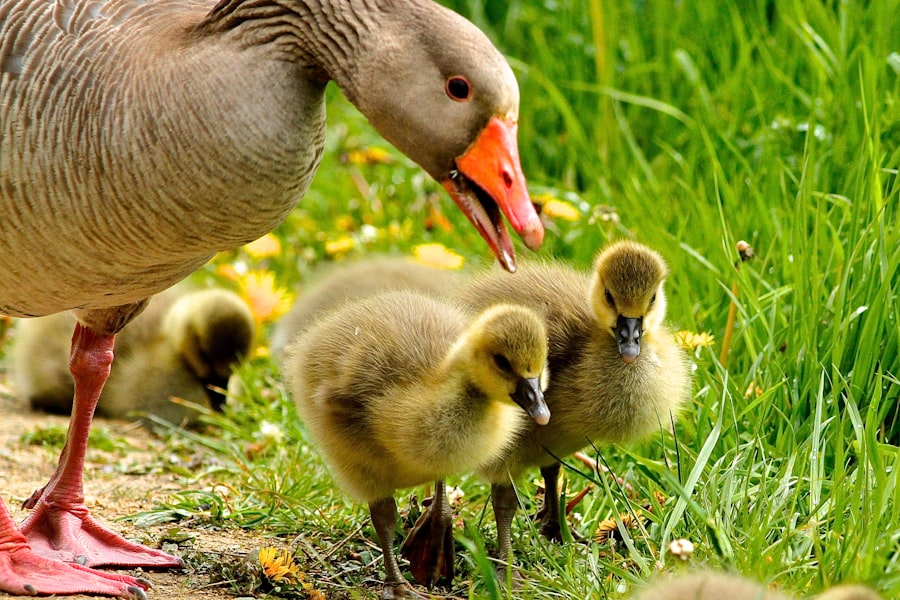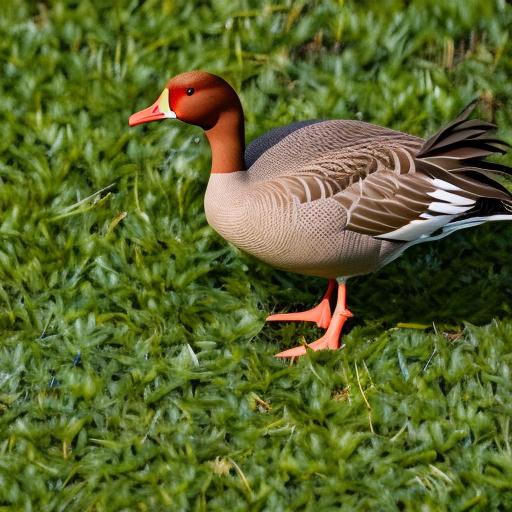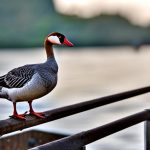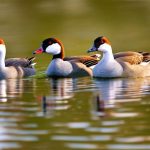Geese can be a nuisance when they invade our crops, lawns, and golf courses. They can cause damage to these areas, leaving behind droppings and destroying vegetation. Finding an effective and humane way to deter geese from these areas is essential. One solution that has proven to be successful is the use of decoys. Decoys are lifelike replicas of geese that are strategically placed to trick real geese into thinking there is a threat or competition in the area. In this article, we will explore the factors to consider when choosing decoys, the different types of decoys available, the benefits of using motion decoys, how many decoys to use, tips for proper placement, maintenance and storage of decoys, budget-friendly options, and the role of decoys in integrated pest management strategies.
Key Takeaways
- Decoys are important in keeping geese away from certain areas.
- When choosing decoys, consider factors such as realism, durability, and cost.
- Motion decoys are more effective in deterring geese than stationary ones.
- The number of decoys needed depends on the size of the area and the number of geese present.
- Proper placement of decoys is crucial for maximum effectiveness.
Factors to Consider When Choosing Decoys for Geese Control
When selecting decoys for geese control, there are several factors to consider. The first factor is the realistic appearance of the decoy. Geese are intelligent birds and can quickly recognize if something is not right. Therefore, it is crucial to choose decoys that closely resemble real geese in terms of size, shape, coloration, and posture.
Another factor to consider is durability. Decoys will be exposed to various weather conditions and may be subject to wear and tear. It is important to choose decoys made from high-quality materials that can withstand these conditions and last for multiple seasons.
The size and quantity of decoys are also important considerations. The number of decoys needed will depend on the size of the area you are trying to protect. Generally, more decoys are better as they create a more convincing illusion of a flock of geese. However, it is essential to strike a balance between quantity and quality to ensure the effectiveness of the decoys.
Lastly, budget is a factor that cannot be ignored. Decoys can vary greatly in price, and it is important to find a balance between cost and effectiveness. While it may be tempting to opt for cheaper options, it is important to consider the durability and effectiveness of the decoys in the long run.
Types of Decoys: Which Ones are Most Effective in Keeping Geese Away?
There are several types of decoys available on the market, each with its own advantages and disadvantages. The most common types of decoys used for geese control are full-body decoys, shell decoys, silhouette decoys, and windsock decoys.
Full-body decoys are the most realistic type of decoy as they resemble an entire goose. They are typically made from durable materials and have lifelike paint jobs. Full-body decoys are effective at attracting geese from a distance and can be placed directly on the ground or on stakes.
Shell decoys are similar to full-body decoys but consist only of the body of a goose. They are lightweight and easy to transport, making them a popular choice for hunters. Shell decoys can be placed directly on the ground or on stakes.
Silhouette decoys are flat, two-dimensional cutouts that resemble the shape of a goose. They are lightweight and easy to transport, making them a popular choice for hunters. Silhouette decoys can be placed directly on the ground or on stakes.
Windsock decoys are made from fabric that flutters in the wind, mimicking the movement of real geese. They are lightweight and easy to transport, making them a popular choice for hunters. Windsock decoys are typically placed on stakes and can be used in combination with other types of decoys.
The Benefits of Using Motion Decoys in Geese Control
Motion decoys are an excellent addition to any decoy spread as they mimic the natural movement of geese. They can be in the form of spinning wing decoys, flapping wing decoys, or floating decoys with built-in motion devices. The movement created by these decoys adds realism to the spread and increases its effectiveness.
One of the main benefits of using motion decoys is that they attract more geese to the area. Geese are social birds and are more likely to land in an area where they see other geese. The movement created by motion decoys signals to passing geese that it is a safe and desirable place to land.
Motion decoys also increase the effectiveness of other decoys in the spread. The movement created by the motion decoys catches the attention of passing geese and draws them closer to the area. This, in turn, increases the chances of deterring geese from the protected area.
How Many Decoys Should You Use to Keep Geese Away?
The number of decoys needed to keep geese away will depend on the size of the area you are trying to protect. As a general rule, more decoys are better as they create a more convincing illusion of a flock of geese. However, it is important to strike a balance between quantity and quality.
For smaller areas, such as lawns or gardens, a smaller number of decoys may be sufficient. A dozen or so well-placed decoys can create enough of a deterrent for geese to avoid the area. However, for larger areas, such as golf courses or agricultural fields, a larger number of decoys will be needed.
It is also important to use a mix of different types of decoys to create a realistic spread. Using only one type of decoy may not be as effective as using a combination of full-body, shell, silhouette, and windsock decoys. This variety will add depth and realism to the spread, increasing its effectiveness.
Tips for Proper Placement of Decoys to Maximize Their Effectiveness

Proper placement of decoys is crucial to maximize their effectiveness in deterring geese. Here are some tips for placing decoys:
1. Place decoys in a realistic pattern: Geese are intelligent birds and can quickly recognize if something is not right. To create a convincing illusion, place the decoys in a realistic pattern that mimics the natural behavior of geese. This can include placing them in small groups or in a V-formation.
2. Vary the spacing between decoys: Geese are social birds and are more likely to land in an area where they see other geese. Varying the spacing between decoys will create a more realistic spread and increase its effectiveness.
3. Place motion decoys upwind: Geese typically land into the wind, so placing motion decoys upwind will create a more natural-looking spread. The movement created by the motion decoys will catch the attention of passing geese and draw them closer to the area.
Maintenance and Storage of Decoys: Keeping Them in Good Condition for Long-Term Use
Proper maintenance and storage of decoys are essential to ensure their long-term use. Here are some tips for keeping your decoys in good condition:
1. Clean decoys regularly: Decoys can accumulate dirt, dust, and debris over time, which can affect their appearance and effectiveness. Regularly clean your decoys with mild soap and water to remove any dirt or debris.
2. Store decoys in a dry, cool place: Moisture and extreme temperatures can damage decoys over time. Store your decoys in a dry, cool place, such as a garage or shed, to protect them from these elements.
3. Repair any damage promptly: Decoys can be subject to wear and tear, especially if they are used frequently. Inspect your decoys regularly for any damage and repair it promptly to ensure their effectiveness.
Budget-Friendly Decoys for Geese Control: Are They Worth the Investment?
Decoys can be a cost-effective solution for geese control, but it is important to consider the durability and effectiveness of the decoys in the long run. Cheaper decoys may not be as durable or effective as more expensive options. They may not withstand harsh weather conditions or may not have a realistic appearance that can effectively deter geese.
Investing in high-quality decoys may be more expensive upfront but can save you money in the long run. These decoys are typically made from durable materials and have lifelike paint jobs that can withstand multiple seasons of use. They are also more effective at deterring geese, reducing the need for additional control methods.
The Role of Decoys in Integrated Pest Management Strategies for Geese Control
Decoys can be used in combination with other methods as part of an integrated pest management (IPM) strategy for geese control. IPM is a holistic approach that combines multiple control methods to effectively manage pest populations while minimizing the use of pesticides.
In addition to decoys, other methods that can be used in an IPM strategy for geese control include habitat modification, exclusion techniques, scare devices, and repellents. By using a combination of these methods, you can create a comprehensive approach to geese control that is both effective and environmentally friendly.
Finding the Best Decoys for Your Geese Control Needs
In conclusion, decoys are a humane and effective way to deter geese from crops, lawns, and golf courses. When choosing decoys, it is important to consider factors such as realistic appearance, durability, size and quantity, and budget. There are several types of decoys available, including full-body, shell, silhouette, and windsock decoys. Motion decoys can increase the effectiveness of the decoy spread by mimicking the natural movement of geese. The number of decoys needed will depend on the size of the area, and proper placement is crucial to maximize their effectiveness. Proper maintenance and storage will ensure the long-term use of decoys. While budget-friendly options may be available, it is important to consider the durability and effectiveness of the decoys in the long run. Decoys can be used in combination with other methods as part of an integrated pest management strategy for geese control. By considering all these factors, you can find the best decoys for your geese control needs.
If you’re looking for effective ways to keep geese away, you might also be interested in learning about the best decoys to use. Decoys can be a great deterrent for geese, as they create the illusion of a predator and discourage them from settling in your area. In a related article on Poultry Wizard, you can find valuable insights on choosing and using decoys to effectively keep geese at bay. Check out the article here to discover how decoys can help protect your property from unwanted geese.
FAQs
What are decoys?
Decoys are objects that are designed to mimic the appearance and behavior of real animals in order to attract or repel them.
Why do people use decoys to keep geese away?
Geese can cause damage to crops, lawns, and other property, as well as create health hazards with their droppings. Decoys can be used to deter geese from these areas by making them think that there is a predator or other threat nearby.
What are the best types of decoys to keep geese away?
The best types of decoys to keep geese away are those that mimic natural predators, such as coyotes, foxes, and owls. Motion-activated decoys that move or make noise can also be effective.
How do I use decoys to keep geese away?
Decoys should be placed in areas where geese are likely to congregate, such as near bodies of water or areas with abundant food sources. They should be moved regularly to prevent geese from becoming accustomed to them.
Are there any other methods for keeping geese away?
Other methods for keeping geese away include using repellents, such as sprays or electronic devices, and modifying the environment to make it less attractive to geese, such as by removing food sources or adding barriers.
Meet Walter, the feathered-friend fanatic of Florida! Nestled in the sunshine state, Walter struts through life with his feathered companions, clucking his way to happiness. With a coop that’s fancier than a five-star hotel, he’s the Don Juan of the chicken world. When he’s not teaching his hens to do the cha-cha, you’ll find him in a heated debate with his prized rooster, Sir Clucks-a-Lot. Walter’s poultry passion is no yolk; he’s the sunny-side-up guy you never knew you needed in your flock of friends!







